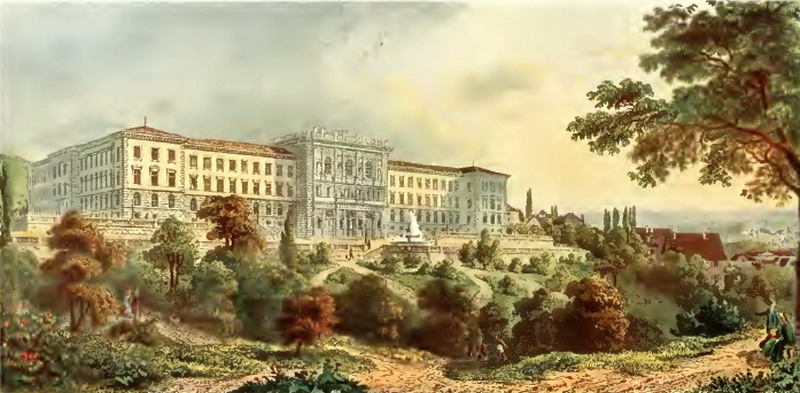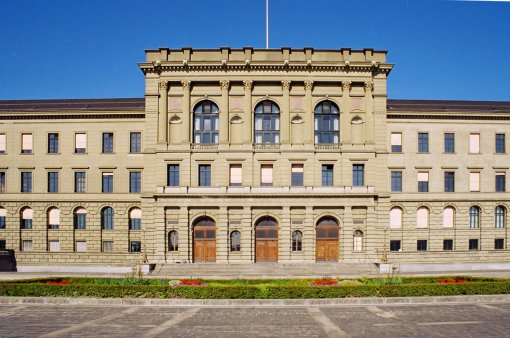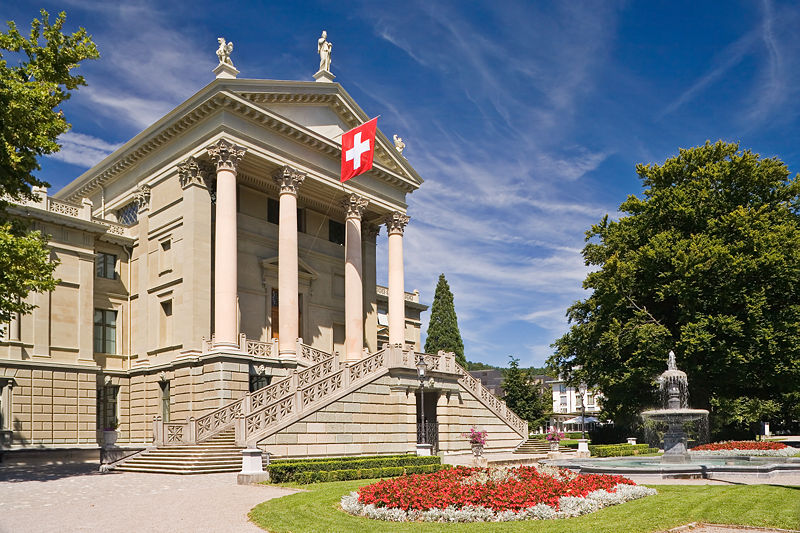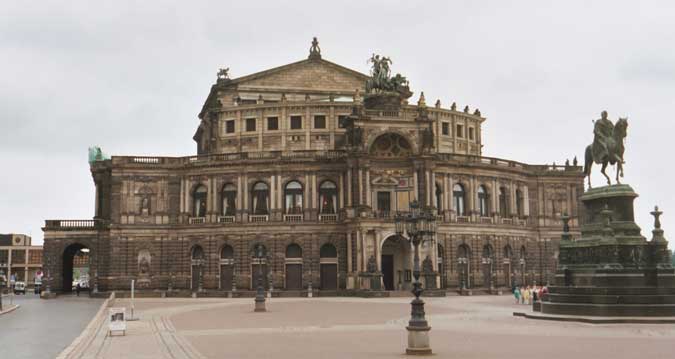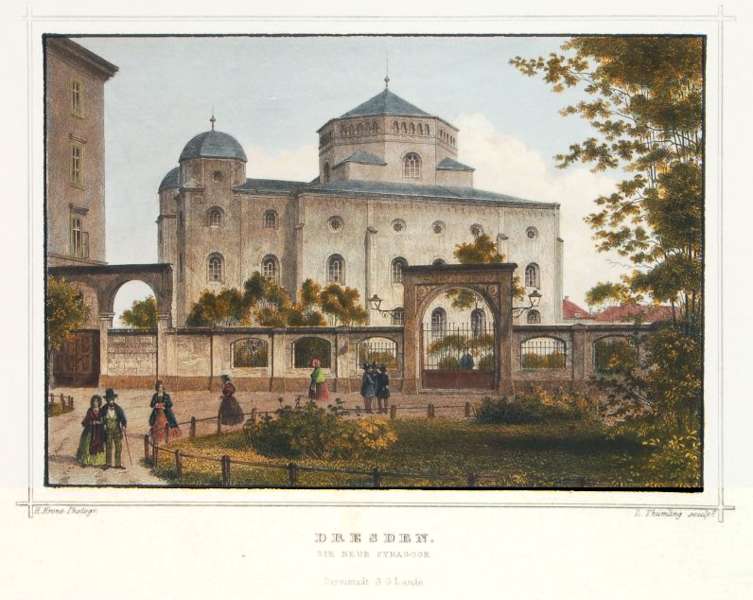<Back to Index>
- Physicist Christian Johann Doppler, 1803
- Architect Gottfried Semper, 1803
- Président de la République Française Jacques René Chirac, 1727
PAGE SPONSOR
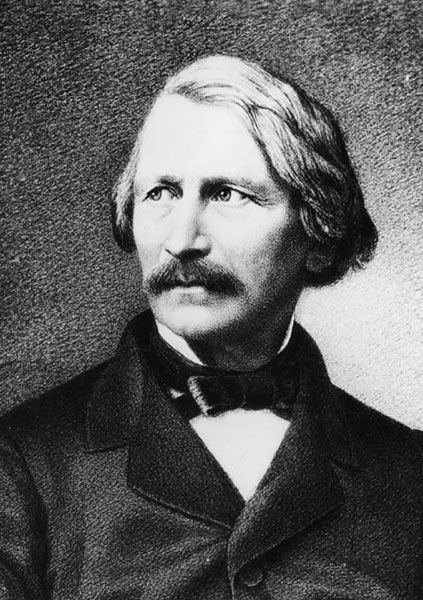
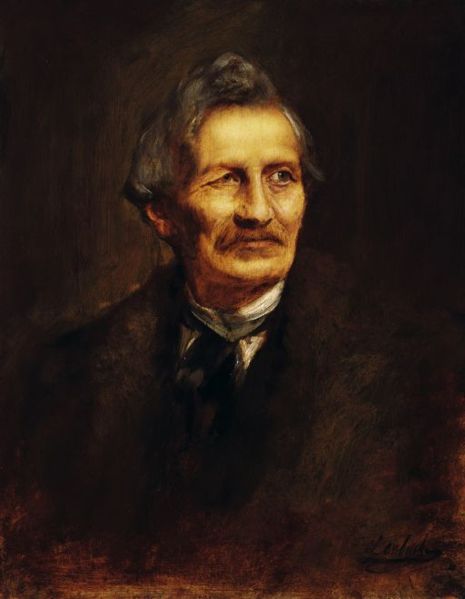
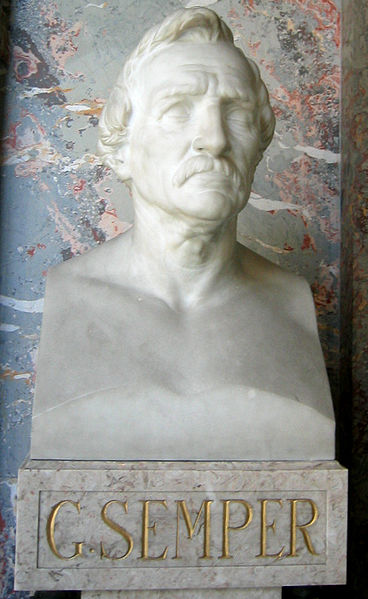
Gottfried Semper (November 29, 1803 - May 15, 1879) was a German architect, art critic, and professor of architecture, who designed and built the Semper Opera House in Dresden between 1838 and 1841. In 1849 he took part in the May Uprising in Dresden and was put on the government's wanted list. Semper fled first to Zürich and later to London. Later he returned to Germany after the 1862 amnesty granted to the revolutionaries.
Semper wrote extensively about the origins of architecture, especially in his book The Four Elements of Architecture from 1851, and he was one of the major figures in the controversy surrounding the polychrome architectural style of ancient Greece. Semper designed works at all scales, from a baton for Richard Wagner to major urban interventions like the re-design of the Ringstraße in Vienna. Semper was born into a well-to-do industrialist family in Altona. The fifth of eight children, he attended the Gelehrtenschule des Johanneums in Hamburg before starting his university education at Göttingen in 1823, where he studied history and mathematics. He subsequently studied architecture in 1825 at the University of Munich under Friedrich von Gärtner. In 1826, Semper travelled to Paris in order to work under the architect Franz Christian Gau and he was present when the July Revolution of 1830 broke out. Between 1830 and 1833, he travelled to Italy and Greece in order to study the architecture and designs of antiquity. In 1832, he spent four months involved in archaeological research of the famous Akropolis in Athens. During this period, he became very interested in the Biedermeier-inspired polychromy debate, which centred around the question whether buildings in Ancient Greece and Rome had been colorfully painted or not. His 1834 publication Vorläufige Bemerkungen über bemalte Architectur und Plastik bei den Alten (Preliminary Remarks on Polychrome Architecture and Sculpture in Antiquity) brought him sudden recognition in architectural and aesthetic circles across Europe On September 30, 1834 Semper obtained a post as Professor of Architecture at the Königlichen Akademie der bildenden Künste (today called the Hochschule) in Dresden thanks largely to the efforts and
support of his former teacher Franz Christian Gau and swore an oath of
allegiance to the King (formerly Elector) of Saxony, Anthony Clement.
The flourishing growth of Dresden during this period provided the young
architect with considerable creative opportunities. In 1838-40 a
synagogue was built in Dresden to Semper's design, it was ever
afterward called the Semper Synagogue and is noted for its Moorish Revival style. Semper's student, Otto Simonson would construct the magnificent Moorish Revival Leipzig synagogue in 1855. Certain civic structures remain today, such as the Elbe-facing gallery of the Zwinger Palace complex. His first building for the Dresden Hoftheater burnt down, and the second, today called the Semperoper,
was built in 1841. Other buildings also remain indelibly attached to
his name, such as the Maternity Hospital, the Synagogue (destroyed
during the Third Reich), the Oppenheim Palace, and the Villa Rosa built for the banker Martin Wilhelm Oppenheim. This last construction stands as a prototype of German villa architecture. On September 1, 1835 Semper married Bertha Thimmig. The marriage ultimately produced six children. A convinced Republican, Semper took a leading role, along with his friend Richard Wagner, in the May 1849 uprising which
swept over the city . He was a member of the Civic Guard
(Kommunalgarde) and helped to erect barricades in the streets. When the
rebellion collapsed, Semper was considered a leading agitator for
democratic change and a ringleader against government authority and he
was forced to flee the city. He
was destined never to return to the city that would, ironically, become
most associated with his architectural (and political) legacy. The
Saxon government maintained a warrant for his arrest until 1863. When
the Semper designed Hoftheater burnt down in 1869, King John,
on the urging of the citizenry, commissioned Semper to build a new one.
Semper produced the plans, but left the actual construction to his son,
Manfred.
After stays in Zwickau, Hof, Karlsruhe and Strasbourg, Semper eventually ended up back in Paris, like many other disillusioned Republicans from the 1848 Revolutions (such as Heinrich Heine and Ludwig Börne). In the fall of 1850, he travelled to London,
England. But while he was able to pick up occasional contracts —
including participation in the design of the funeral carriage for the Duke of Wellington and
the designs of the Canadian, Danish, Swedish, and Ottoman sections of
the 1851 Exhibition in the Crystal Palace — he found no steady
employment. If his stay in London was disappointing professionally,
however, it proved a fertile period for Semper's theoretical, creative
and academic development. He published Die vier Elemente der Baukunst (The Four Elements of Architecture) in 1851 and Wissenschaft, Industrie und Kunst (Science, Industry and Art) in 1852. These works would ultimately provide the groundwork for his most widely regarded publication, Der Stil in den technischen und tektonischen Künsten oder Praktische Ästhetik, which was published in two volumes in 1861 and 1863. As the onset of the industrial revolution, the Swiss Federation planned to establish a polytechnical school. As the principal judge for the competition held
to select a design for the new building, Semper deemed the submitted
entries unsatisfactory and, ultimately, designed the building himself.
Proudly situated (where fortified walls once stood), visible from all
sides on a terrace overlooking the core of Zurich,
the new school became the herald of a new epoch. The building
(1853 – 1864), which despite frequent remodeling continues to evoke
Semper's concept, was initially required to accommodate not only the
new school (known today as the ETH Zurich), but the existing University of Zurich, as well. In
1855 Semper became a professor of architecture at the new school and
the success of many of his students who attained success and renown
served to ensure his international fame. The Swiss architect Emil Schmid was
one such student. With his income as a professor, Semper was able to
reunite his family, bringing them to Zurich from Saxony. The City Hall
in Winterthur is among other buildings designed by Semper in Switzerland. Semper provided Bavaria's King Ludwig II with a conceptual design for a theatre dedicated to the work of Richard Wagner to
be built in Munich. The project, developed from 1864 to 1866, was never
realized, although Wagner 'borrowed' may of its features for his own
later theatre at Bayreuth. The 'Museum-question' was discussed in Vienna during the
1860s. Works forming the imperial art collection were scattered among
several buildings. Semper was assigned to submit a proposal for
locating new buildings in conjunction with redevelopment of the
Ringstrasse. In 1869 he designed a gigantic 'Imperial Forum' which was
not realized. The National Museum of Art History and the National
Museum of Natural History were erected, however, opposite the Palace
according to his plan, as was the Burgtheater. In 1871 Semper moved to
Vienna to undertake the projects. During construction, repeated
disagreements with his appointed associate architect (Karl Freiherr von
Hasenauer), led Semper to resign from the project in 1876. In the
following year his health began to deteriorate. He died two years later
while on a visit to Italy.
